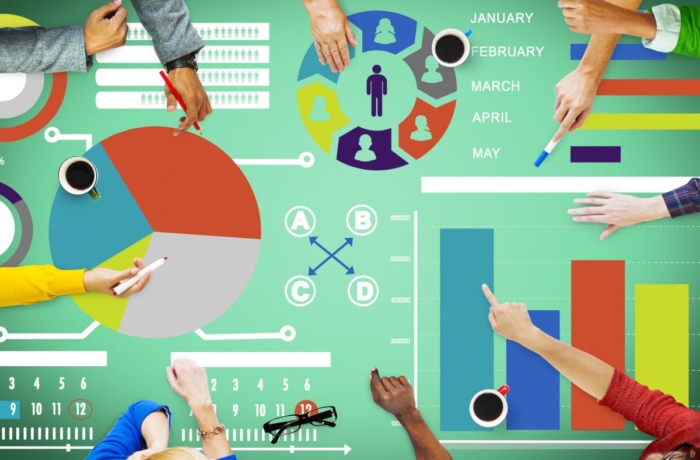We live in a time when data is on everyone’s minds. Teachers, school administrators, and educational policy leaders are no exception.
Student data — family history, income level, attendance rates, ELL status, health information, and assessment performance — has the potential to improve education, if used properly. Teachers can use data to inform their classroom practices. Administrators can use data for school improvement. Boards of education (at state and federal levels) can use data to understand school and district performance and to distribute funding.
Pro Tip
Collect data to improve your classroom via online surveys and questionnaires. Create a custom online form from scratch, or get started with a free template!
The problem is that schools and education stakeholders have often faced barriers to collecting data. In addition to day-to-day challenges, conversations about school data are extremely complicated. Leaders know that data is an important tool, but they struggle to identify a clear way to use it at both micro and macro levels.
Barriers for collecting classroom data
Teachers and administrators alike face challenges when it comes to collecting data. Most of the barriers come down to two things: training and time.
Teachers are busy with lesson planning and teaching, classroom management, grading, parent communication, and school meetings. Data collection often stays on the back burner, and teachers only reach out for student information in extreme cases.
As UCLA Graduate School of Education faculty advisor Rebecca Alber, Ed.D., writes at Edutopia, “it’s difficult to find the time to read students’ files, but if you haven’t before, trust me, it’s well worth it.” She reflects on a time when she chose to take the time to read files on students she was concerned about.
She discovered that one of her students was homeless, another had a mental illness, and others were placed in a general class even though they had been identified as gifted. Although the data was in their files, Alber only learned about her students’ histories when she personally took the time to go through them.
Pro Tip
For an insightful look into the future of higher education, explore “8 Top Trends in Higher Education to Watch in 2024” on Jotform’s blog.
Not all teachers are able to access this type of student information, nor do they have time to read through hundreds of student files. Teachers need the support of their school administrators when it comes to having the data they need to improve their teaching style, class management, and interventions with high-risk students.
But administrators also struggle to find the time, training, and tools they need to collect and distribute student data.
In an ACT study that examined principals’ use of data, research scientist Raeal Moore and statistician Teresa Shaw found that principals report several different minor and major barriers to collecting student data. Minor barriers included
- A lack of preparation
- A lack of technical skills for using data
- Difficulties sharing and communicating about school data
Many schools simply don’t know how to collect data and aren’t prepared to use it effectively.
Principals say the largest challenge to collecting and using data is not having enough time. Teachers and school staff are already overworked and don’t feel like there are enough hours to devote to data collection, analysis, and implementation. Both principals and teachers need direction, training, and tools to gather data and make data-informed decisions.
How to equip schools to gather different types of data
Before policy makers, administrators, and teachers start collecting data, they need to agree on what data they want to study and why. At each level, data — not just test scores — will serve different purposes.
Teachers will want to know students’ backgrounds and past academic history to guide their teaching. Administrators and policy makers will have to comply with state and federal regulations in order to improve school performance.
Jake Firman, director of education technology at DSST Public Schools in Denver, says data shouldn’t just be used to measure which students are succeeding or falling behind, but should be used as a way to measure the “culture” of schools and districts. This includes looking at things like “particular student-teacher relationships that are struggling or excelling within the school, subtle shifts of a school culture from positive to negative reinforcement, or early signs that a student is not buying into the values of the school community.”
Every school, district, and state will have different priorities, funding, and resources for conducting research. The first step, though, is to agree on what is important to study and why. Only then can they determine which tools will help them achieve their goals in an efficient manner.
One of the simplest tools teachers and administrators can use is online forms. These forms can be integrated with tools to help leaders easily understand the data and to make data-informed decisions.
This information can be shared with other stakeholders later. Sharing important information is key because no matter how much data collected, if it isn’t shared with teachers, districts, and policy makers, it won’t serve any purpose.
Education technology writer Dian Schaffhauser says transparency and data sharing will be vital under the Every Student Succeeds Act. This is because while 48 states will be collecting new progress data, that data is largely undefined, and processes will be different at state and district levels.
Data is only useful if it is clear why it is collected, how it was gathered, and if the people closest to students have access to it.














Send Comment:
2 Comments:
More than a year ago
Hey
Your article is such a great article..
Nice and easy wording...
More than a year ago
Hey, your article is really great. This is very informative to me. thanks a lot for sharing attractive information with us. At ABAssignmentHelp, we generally work hard to reach the assignment help services according to the laid out measures and principles that students receive in the best assessment. We are providing the best writing services at an affordable price.